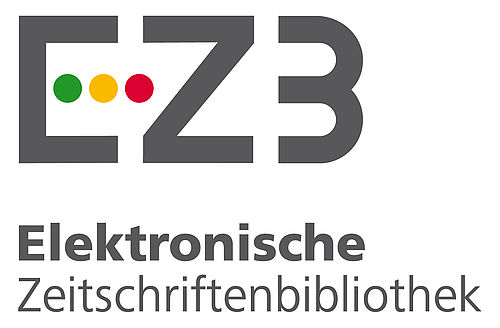Abstract
This study comprises the results of demonstrative studies on some
medicinal and aromatic plants carried out by Kayseri Directorate of Provincial
Agriculture and Forestry under the field conditions in 2015-2017 within the
Project of Improving the Medicinal-Aromatic and Dye Plants Cultivations, funded
by General Directorate of Plant Production (BÜGEM). In this project, five
different plants consisting of lavandin (Lavandula
x intermedia Emeric ex Loisel), lemon balm (Melissa officinalis L.), oregano (Origanum onites L.), salep (Orchis
sancta and Serapias womeraceae),
and black cumin (Nigella sativa) were
studied in 11 counties for three years. Desired results were obtained from
lavandin, lemon balm, black cumin and oregano plants under the ecological
conditions of Kayseri. In terms of cultivation of black cumin, there were not
any considerable problems except for weeds affecting sufficient yields. The
weed problem was primarily orginated by not having herbicides authorized by the
Ministry of Agriculture and Forestry. Although application of different
planting times and mulching methods in salep plants, desired results couldn’t
be obtained because of the harsh winter conditions and frost damage.
Keywords
Supporting Institution
Bitkisel Üretimi Geliştirme Genel Müdürlüğü / Tarım ve Orman Bakanlığı
Thanks
As the Kayseri Project Team, we would like to thank the Ministry of Agriculture and Forestry, the General Directorate of Plant Production for the Project of Improving the Medicinal-Aromatic and Dye Plants Cultivations.
References
- References
- 1. Abdellatif, F., A. Boudjella Hadjira Zitouni and A. Hassani. 2014. Chemical composition and antimicrobial activity of the essential oil from leaves of Algerian Melissa officinalis L. Exclı Journal. 13: 772-781.
- 2. Acibuca. V., D. Bostan Budak. 2018. Place and Importance of Medicinal and Aromatic Plants in the World and Turkey, Cukurova J. Agric. Food Sci. 33(1): 37-44.
- 3. Arabaci. O. and E. Bayram. 2005. The Effect of Nitrogen Fertilization and Plant Density on SomeAgronomic and Quality Traits of Lavender (Mill.) Under Ecological Conditions of Aydin. Adu Journal of the Faculty of Agriculture, 2: 2: 13-19.
- 4. Arabaci. O., M. Tutar, N.G. Ogretmen, F. Yasar and U. Tan. 2014. Effects of Different Cultural Practices in Salep Orchids, II. Symposium of Medicinal and Aromatic Plants, Ataturk Horticultural Central Research Institute Directorate, 23-25 September, Yalova, pp. 479-487.
- 5. Arslan, N., Baydar, H., Kizil, S., Karik, U., Sekeroglu, N., Gumuscu, A. 2015. Tıbbi ve Aromatik Bitkiler Üretiminde Değişimler ve Yeni Arayışlar. VII. Türkiye Ziraat Mühendisliği Teknik Kong. s:483-507.
- 6. Aslancan. H., R. Sarıbas, C. Dagıstanlioglu, A. B. Tinmaz and D. Arslan. 2014. Determination of Agricultural Properties of Some Lavender (Lavandula x Intermedia Emeric Ex Loisel.) Cultivars in Isparta Conditions, II. Symposium of Medicinal and Aromatic Plants, Ataturk Horticultural Central Research Institute Directorate, 23-25 September, Yalova, pp. 344-347.
- 7. Baser, K.H.C. 1997. Tıbbi ve Aromatik Bitkilerin İlaç ve Alkollü İçki Sanayinde Kullanımı, İstanbul Ticaret Odası Yayın No: 39.
- 8. Bayram. E., S. Kirici. S. Tansi. G. Yilmaz. O. Arabaci. S. Kizil and I. Telci. 2010. Tıbbi ve Aromatik Bitkiler Üretiminin Arttırılması Olanakları, TMMOB Ziraat Mühendisleri Odasi, Ziraat Mühendisligi VII. Teknik Kongresi, Ankara, Türkiye, 11-15 Ocak 2010, s. 437-456.
- 9. Gezici. S. 2018. Promising Anticancer Activity of Lavender (Lavandula angustifolia Mill.) Essential Oil Through Induction of both Apoptosis and Necrosis. Annals of Phytomedicine, 7(2), 38-45.
- 10. Karik. U, Cinar. O, Tunçtürk. M, Şekeroğlu. Gezici. S. 2018. Essential Oil Composition of Some Sage (Salvia spp.) Species Cultivated in İzmir (Turkey) Ecological Conditions. 52(4), 102-107.
- 11. Koc. H. 2002. Bitkilerle Saglıklı Yaşam: Gaziosmanpaşa Üniversitesi Ziraat Fakültesi Tarla Bitkileri Bölümü, Tokat.
- 12. Kumar. S. A. 2009. Plants-based Medicines in India. http://pib.nic.in/feature/feyr2000/ fmay2000/f240520006.html
- 13. Tutar. M., F. Cicek. A. O. Sari. A. Bilgiç and O. Yildiz. 2012. The Culture of Some Orchid Species Distributed İn Aegean Region. Turkey 2. Orchids and Sahlep Workshop Proceedings, Aegean Agricultural Research Institute, 25-26 April, İzmir, pp. 301-320.
- 14. Uyanık. M. and B. Guurbuz. 2014. A Study on Determination of Dıurnal Variability in Lemon Balm (Melissa officinalis L.), II. Symposium of Medicinal and Aromatic Plants, Ataturk Horticultural Central Research Institute Directorate, 23-25 September, Yalova, pp. 432-437.
- 15. Uzun. A., K. Kevseroglu and B. Gurbuz. 2014. Determination of Some Vegetal and Chemical Traits of Lemon Balm (Melissa officinalis L.) Ecotypes Presented in the Flora of Middle and East Black Sea Region, II. Symposium of Medicinal and Aromatic Plants, Ataturk Horticultural Central Research Institute Directorate, 23-25 September, Yalova, pp. 377.
Abstract
References
- References
- 1. Abdellatif, F., A. Boudjella Hadjira Zitouni and A. Hassani. 2014. Chemical composition and antimicrobial activity of the essential oil from leaves of Algerian Melissa officinalis L. Exclı Journal. 13: 772-781.
- 2. Acibuca. V., D. Bostan Budak. 2018. Place and Importance of Medicinal and Aromatic Plants in the World and Turkey, Cukurova J. Agric. Food Sci. 33(1): 37-44.
- 3. Arabaci. O. and E. Bayram. 2005. The Effect of Nitrogen Fertilization and Plant Density on SomeAgronomic and Quality Traits of Lavender (Mill.) Under Ecological Conditions of Aydin. Adu Journal of the Faculty of Agriculture, 2: 2: 13-19.
- 4. Arabaci. O., M. Tutar, N.G. Ogretmen, F. Yasar and U. Tan. 2014. Effects of Different Cultural Practices in Salep Orchids, II. Symposium of Medicinal and Aromatic Plants, Ataturk Horticultural Central Research Institute Directorate, 23-25 September, Yalova, pp. 479-487.
- 5. Arslan, N., Baydar, H., Kizil, S., Karik, U., Sekeroglu, N., Gumuscu, A. 2015. Tıbbi ve Aromatik Bitkiler Üretiminde Değişimler ve Yeni Arayışlar. VII. Türkiye Ziraat Mühendisliği Teknik Kong. s:483-507.
- 6. Aslancan. H., R. Sarıbas, C. Dagıstanlioglu, A. B. Tinmaz and D. Arslan. 2014. Determination of Agricultural Properties of Some Lavender (Lavandula x Intermedia Emeric Ex Loisel.) Cultivars in Isparta Conditions, II. Symposium of Medicinal and Aromatic Plants, Ataturk Horticultural Central Research Institute Directorate, 23-25 September, Yalova, pp. 344-347.
- 7. Baser, K.H.C. 1997. Tıbbi ve Aromatik Bitkilerin İlaç ve Alkollü İçki Sanayinde Kullanımı, İstanbul Ticaret Odası Yayın No: 39.
- 8. Bayram. E., S. Kirici. S. Tansi. G. Yilmaz. O. Arabaci. S. Kizil and I. Telci. 2010. Tıbbi ve Aromatik Bitkiler Üretiminin Arttırılması Olanakları, TMMOB Ziraat Mühendisleri Odasi, Ziraat Mühendisligi VII. Teknik Kongresi, Ankara, Türkiye, 11-15 Ocak 2010, s. 437-456.
- 9. Gezici. S. 2018. Promising Anticancer Activity of Lavender (Lavandula angustifolia Mill.) Essential Oil Through Induction of both Apoptosis and Necrosis. Annals of Phytomedicine, 7(2), 38-45.
- 10. Karik. U, Cinar. O, Tunçtürk. M, Şekeroğlu. Gezici. S. 2018. Essential Oil Composition of Some Sage (Salvia spp.) Species Cultivated in İzmir (Turkey) Ecological Conditions. 52(4), 102-107.
- 11. Koc. H. 2002. Bitkilerle Saglıklı Yaşam: Gaziosmanpaşa Üniversitesi Ziraat Fakültesi Tarla Bitkileri Bölümü, Tokat.
- 12. Kumar. S. A. 2009. Plants-based Medicines in India. http://pib.nic.in/feature/feyr2000/ fmay2000/f240520006.html
- 13. Tutar. M., F. Cicek. A. O. Sari. A. Bilgiç and O. Yildiz. 2012. The Culture of Some Orchid Species Distributed İn Aegean Region. Turkey 2. Orchids and Sahlep Workshop Proceedings, Aegean Agricultural Research Institute, 25-26 April, İzmir, pp. 301-320.
- 14. Uyanık. M. and B. Guurbuz. 2014. A Study on Determination of Dıurnal Variability in Lemon Balm (Melissa officinalis L.), II. Symposium of Medicinal and Aromatic Plants, Ataturk Horticultural Central Research Institute Directorate, 23-25 September, Yalova, pp. 432-437.
- 15. Uzun. A., K. Kevseroglu and B. Gurbuz. 2014. Determination of Some Vegetal and Chemical Traits of Lemon Balm (Melissa officinalis L.) Ecotypes Presented in the Flora of Middle and East Black Sea Region, II. Symposium of Medicinal and Aromatic Plants, Ataturk Horticultural Central Research Institute Directorate, 23-25 September, Yalova, pp. 377.
Details
| Primary Language | English |
|---|---|
| Journal Section | Research Articles |
| Authors | |
| Publication Date | December 26, 2019 |
| Published in Issue | Year 2019 |
-------------------------------------------------------------------------------------------------------------------------------













-------------------------------------------------------------------------------------------------------------------------
 CUPMAP Journal is licensed under a Creative Commons Attribution-NonCommercial-NoDerivatives 4.0 International License.
CUPMAP Journal is licensed under a Creative Commons Attribution-NonCommercial-NoDerivatives 4.0 International License.
-----------------------------------------------------------------------------------------------------------------------------------------
This is an open access journal which means that all content is freely available without charge to the user or his/her institution. Users are allowed to read, download, copy, distribute, print, search, or link to the full texts of the articles, or use them for any other lawful purpose, without asking prior permission from the publisher or the author. This is in accordance with the BOAI definition of open access.

